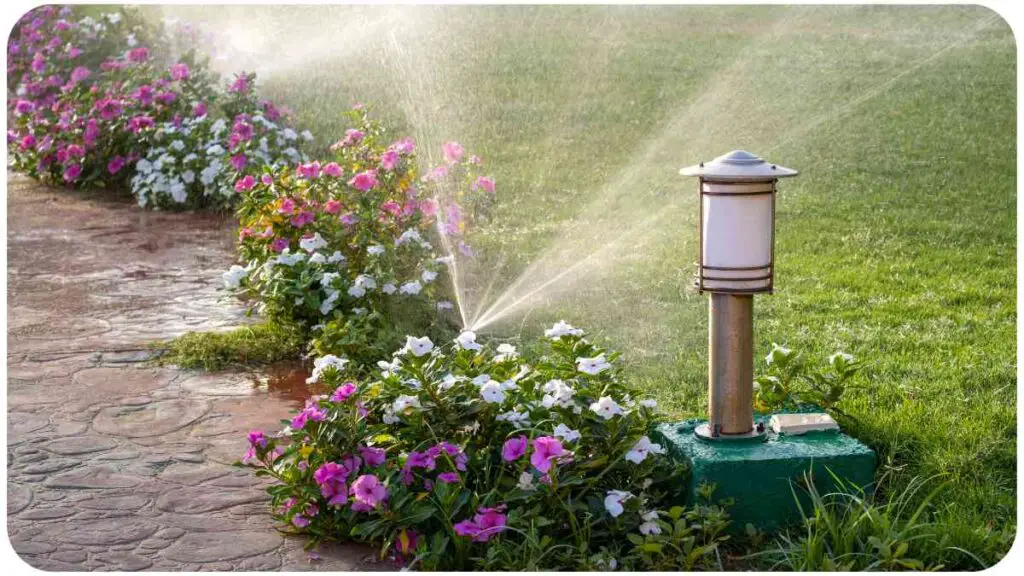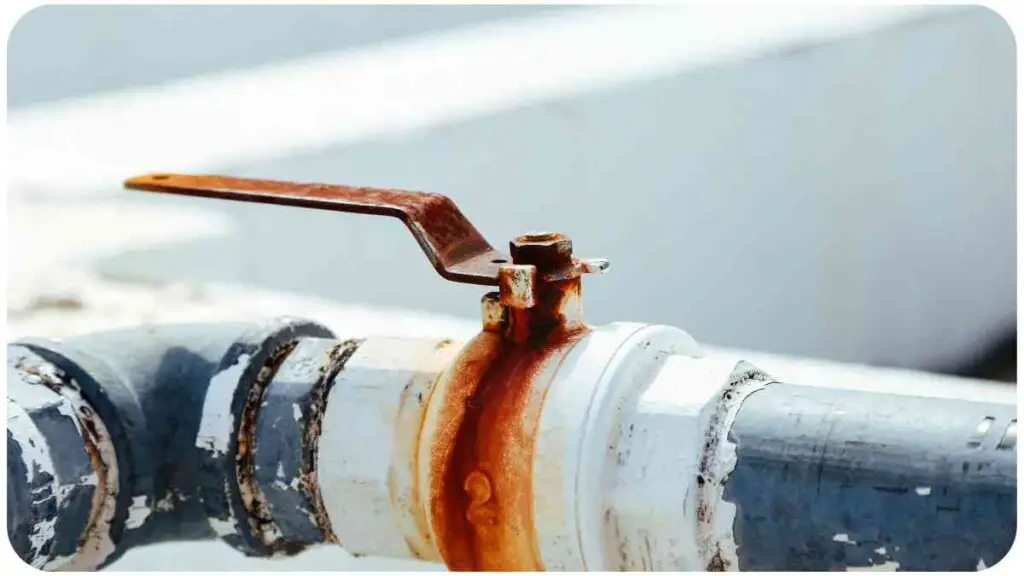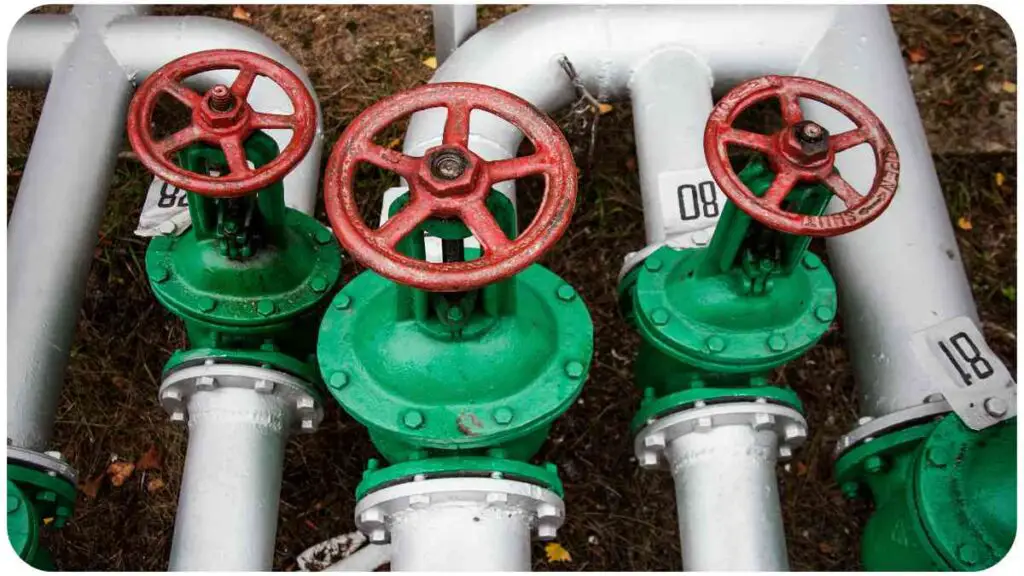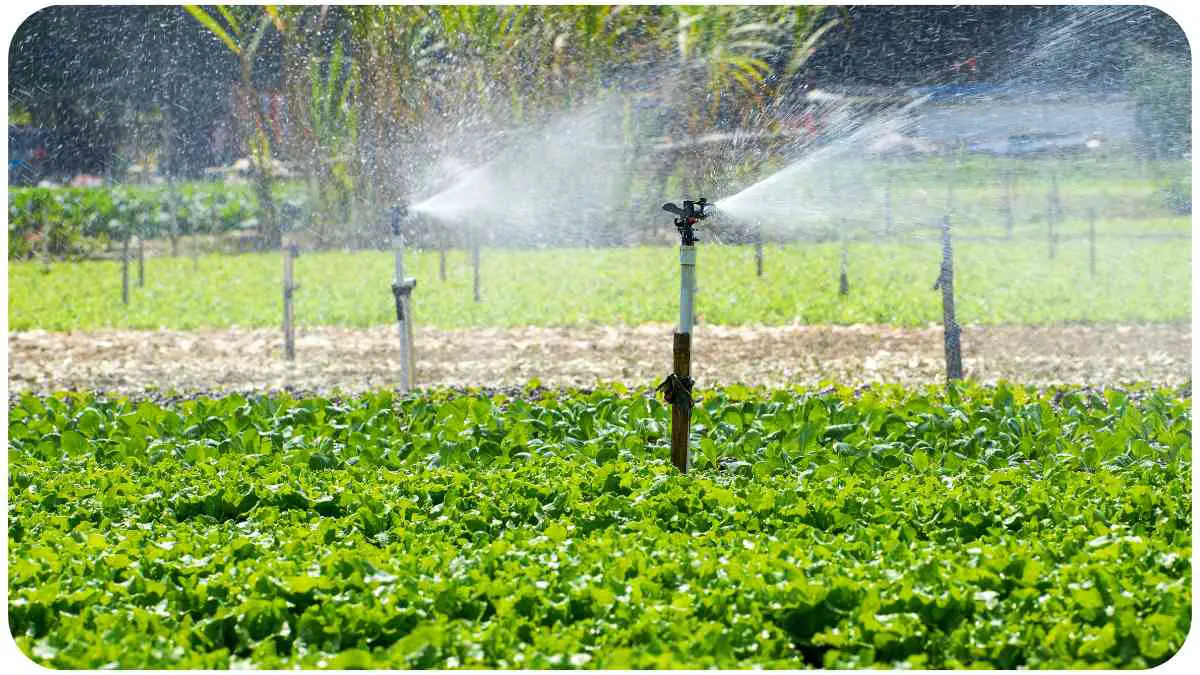As a proud owner of a Rain Bird sprinkler system, you expect lush green lawns and thriving plants. However, if you find your Rain Bird sprinkler system continuously running, it’s time for some troubleshooting.
In this comprehensive guide, we’ll explore common issues, offer step-by-step solutions, and provide expert insights to help you get your sprinkler system back on track.
| Takeaways |
|---|
| 1. Regularly check your Rain Bird controller for error messages or lights to catch setup issues promptly. |
| 2. Ensure proper water supply and address disruptions or low pressure to prevent sprinklers from not activating. |
| 3. Utilize the rain sensor feature intelligently, setting the controller to “bypass” during periods of recent rainfall. |
| 4. Adjust programming carefully to avoid overlapping zones and excessive water output. |
| 5. Conduct manual checks on sprinkler valves to identify and replace any malfunctioning solenoids. |
| 6. Schedule professional inspections annually to catch potential issues and optimize system efficiency. |
| 7. Consider upgrading to advanced Rain Bird technologies for enhanced control and water conservation. |
| 8. Adjust watering schedules based on seasonal changes and landscape needs. |
| 9. Regular maintenance is key to a healthy sprinkler system; address issues promptly to ensure longevity. |
Understanding Rain Bird Sprinkler Systems

Before diving into troubleshooting, let’s understand the key components of Rain Bird sprinkler systems. These systems consist of a controller, various zones, and valves. The controller manages the scheduling, and each zone represents a specific area in your landscape. Valves control the flow of water to individual zones.
Is your Gardena sprinkler system acting up? Discover practical troubleshooting tips to resolve common issues and keep your garden thriving with efficient irrigation.
Common Issues with Sprinkler Systems
3.1 Controller Troubleshooting
3.1.1 Checking for Error Messages or Lights
One of the first things to do when troubleshooting your Rain Bird sprinkler system is to inspect the controller for any error messages or lights. On the ESP-Me controller, a flashing LED could indicate setup issues, while a solid LED might signal a master valve or station short.
| Error Type | Description | Solution |
|---|---|---|
| Flashing | Setup issues | Check and set up start time, watering duration, or days. |
| Solid | Master valve or station short | Inspect and repair faulty wiring. |
Table 1: Controller Error Messages and Solutions
3.1.2 Blank or Frozen Display
If your controller’s display is blank or frozen, several factors could be at play.
| Issue | Solution |
|---|---|
| No power or battery issue | Check power source, battery, and circuit breaker. |
| Electrical surge | Unplug for 2 minutes, then plug back in. |
| Permanent damage | If issues persist, consider replacing the controller. |
3.2 Watering Issues
3.3 Ensuring Adequate Water Supply
If the controller appears to be functioning correctly but the sprinklers aren’t coming on, check the water supply.
| Issue | Solution |
|---|---|
| Disruption in water source | Inspect for main problems or closed shutoff valves. |
| Low water pressure | Identify and fix issues such as broken pipes or excessive water usage. |
Table 3: Solutions for Water Supply Issues
3.4 Rain Sensor Feature
Rain Bird systems often include a rain sensor to prevent unnecessary watering during rainy conditions. If the sprinklers don’t activate as scheduled, consider the rain sensor feature.
| Situation | Solution |
|---|---|
| Recent rainfall | Set the controller to “bypass” mode. |
| Rain sensor malfunction | Investigate and repair or replace the sensor. |
Table 4: Troubleshooting Rain Sensor Feature
3.5 Adjusting Programming for Water Output
In case your sprinklers deliver excessive water, review the programming settings.
Dive into the world of Netafim drip irrigation. Learn about common problems and effective solutions to ensure your system delivers optimal performance for your plants.
| Issue | Solution |
|---|---|
| Overlapping programs or zones | Ensure each zone is not included in multiple programs. |
| Excessive run times | Adjust start times and shorten run time if necessary. |
Table 5: Solutions for Water Output Issues
3. Rain Bird Valve Problems

3.6 Manually Checking Valves
After addressing controller and water supply issues, inspect the valves manually.
| Situation | Solution |
|---|---|
| Valve operation issues | Manually check valve operation. |
| Solenoid non-clicking | Activate manually from the controller; if no click, replace the solenoid. |
Table 6: Troubleshooting Valve Operation
3.7 Solenoid Activation
When checking the solenoid, ensure it clicks when activated.
| Situation | Solution |
|---|---|
| No clicking sound | Replace the solenoid if it doesn’t click. |
Table 7: Troubleshooting Solenoid Activation
3.8 Valve Installation and Cleaning
Verify correct valve installation and use “flush mode” to clean out debris.
Is your Orbit water timer giving you trouble? Explore this guide to easy fixes and get your timer back on track, ensuring your garden receives the right amount of water.
| Issue | Solution |
|---|---|
| Incorrect valve direction | Reinstall valves in the correct direction. |
| Debris clogging the valve | Use “flush mode” to clean out debris. |
Table 8: Valve Installation and Cleaning Solutions
3.9 Inspecting for Leaks or Cracks
Examine valves for potential leaks or cracks.
| Issue | Solution |
|---|---|
| Leaks or cracks in the valve | Fix any leaks or replace valves if cracks are detected. |
4. Step-by-Step Troubleshooting Guide
Controller Troubleshooting Steps
4.1.1 Check for Error Messages or Lights
Begin by examining the controller for any error messages or lights. Refer to Table 1 for specific error types and corresponding solutions.
4.1.2 Blank or Frozen Display
If the controller display is blank or frozen, follow the steps outlined in Table 2 to identify and resolve the issue.
Watering Issues Troubleshooting Steps
4.2.1 Ensuring Adequate Water Supply
When sprinklers are not activating, inspect the water supply. Refer to Table 3 for potential issues and solutions.
4.2.2 Rain Sensor Feature
Investigate the rain sensor feature if your system is not watering after recent rainfall. Table 4 provides guidance on troubleshooting.
4.2.3 Adjusting Programming for Water Output
If your sprinklers are delivering too much water, follow the steps in Table 5 to adjust the programming for optimal water output.
Need to reset your Orbit B-hyve timer? Follow this quick guide to ensure proper functionality, allowing you to efficiently manage your irrigation schedule and conserve water.
Rain Bird Valve Troubleshooting Steps

4.3.1 Manually Checking Valves
Inspect valves manually to ensure proper operation. Use Table 6 to troubleshoot potential valve-related issues.
4.3.2 Solenoid Activation
Check for solenoid activation and follow Table 7 for solutions if the solenoid is not clicking.
4.3.3 Valve Installation and Cleaning
Verify correct valve installation and clean out debris using the steps outlined in Table 8.
4.3.4 Inspecting for Leaks or Cracks
Examine valves for leaks or cracks, referring to Table 9 for troubleshooting steps.
5. Expert Tips and Insights
Now that you’ve gone through the step-by-step troubleshooting guide, here are some additional expert tips to ensure your Rain Bird sprinkler system stays in top-notch condition:
- Regular Maintenance: Conduct routine checks on your sprinkler system, especially before the watering season. Look for any signs of wear and tear, and address issues promptly.
- Weather Adjustment: Utilize the weather-based features in advanced Rain Bird controllers. These features can automatically adjust watering schedules based on local weather conditions, optimizing water efficiency.
- Professional Inspection: Consider hiring a professional irrigation technician for a comprehensive inspection at least once a year. They can identify potential issues before they escalate.
- Upgrading Technology: If your system is outdated, upgrading to newer Rain Bird technologies can enhance efficiency and water conservation. Smart controllers, for instance, allow for remote monitoring and control via mobile apps.
- Seasonal Adjustments: Adjust watering schedules based on seasonal changes. During cooler months, your landscape may require less water, so tweak your settings accordingly.
Enhance your lawn care with Scotts lawn spreaders. Check out troubleshooting tips to optimize your spreader setup and achieve a lush, healthy lawn effortlessly.
6. Conclusion
In conclusion, troubleshooting your Rain Bird sprinkler system doesn’t have to be a daunting task. By following the step-by-step guide outlined in this article and incorporating expert tips, you can quickly identify and resolve issues that may cause your system to continuously run.
Remember, the key to a healthy and efficient sprinkler system lies in regular maintenance, proper programming, and staying attuned to the unique needs of your landscape.
By understanding the components of your Rain Bird system and addressing issues promptly, you’ll ensure your lawn stays vibrant while conserving water.
Keep in mind that each sprinkler system may have its quirks, and it’s crucial to refer to your specific model’s manual for detailed instructions. If troubleshooting becomes challenging, don’t hesitate to seek professional assistance.
By taking a proactive approach to sprinkler system care, you not only save water but also contribute to the longevity and effectiveness of your Rain Bird system. Happy watering!
Further Reading
- Rain Bird: Why Does My ESP-Me Sprinkler Timer Run Through All Stations?
- Rain Bird’s official guide addressing the issue of a sprinkler timer running through all stations and how to troubleshoot the ESP-Me controller.
- Smart Earth Sprinklers: Why Do My Sprinklers Continue to Cycle Over and Over? (Part Two)
- Part Two of Smart Earth Sprinklers’ article series providing insights into common issues causing sprinklers to cycle repeatedly and offering solutions.
- eHow: How to Troubleshoot a Rainbird Sprinkler System
- eHow’s comprehensive guide on troubleshooting Rain Bird sprinkler systems, offering step-by-step instructions for resolving common issues.
FAQs
Why does my Rain Bird sprinkler system keep running?
The continuous operation of your Rain Bird sprinkler system could be attributed to various factors such as programming errors, valve issues, or sensor malfunctions.
How can I troubleshoot a Rain Bird ESP-Me sprinkler timer?
To troubleshoot an ESP-Me sprinkler timer, start by checking for error messages or lights on the controller. Ensure correct setup of start times, watering duration, and days. Address any issues with the master valve or station shorts.
What should I do if my sprinklers aren’t coming on?
If the sprinklers are not activating, verify an adequate water supply, check for a rain sensor feature preventing watering after rainfall, and adjust programming to ensure proper water output.
How do I manually check Rain Bird sprinkler valves?
To manually check Rain Bird sprinkler valves, activate “manual start” from the controller and listen for the solenoid click. If no click is heard, the solenoid may be burned out and requires replacement.
How often should I conduct maintenance on my sprinkler system?
Regular maintenance on your sprinkler system is recommended at least once a year, preferably before the watering season. This ensures optimal functionality and helps identify potential issues early on.

For 15 years, Hellen James has worked in the gardening industry as an expert and landscape designer. During her career, she has worked for a variety of businesses that specialize in landscaping and gardening from small firms to large corporations.

